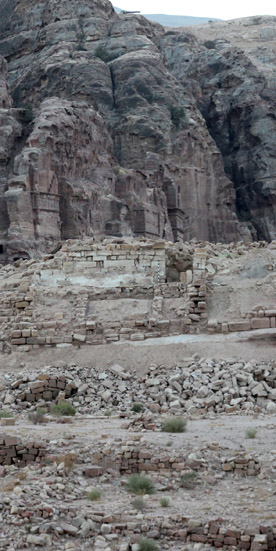Architecture and architectural decoration in Petra (Jordan) – Studies on the freestanding Nabataean architecture and their models

Petra, ancient capital of the Nabataeans and inscribed on the UNESO World Heritage List since 1985, obtained its visible monumental character between the mid-1st century BC and the end of the 1st century AD. The architectural decoration has been heavily discussed in modern research on the basis of the famous rock-cut façades. However, the current body of knowledge lacks a comprehensive study of the freestanding architecture and the architectural decoration of the city centre.
In the course of new research in the north-east quadrant of the city centre, a focus on architectural fragments and architectural decoration of freestanding buildings is pursued for the first time. More than 900 blocks with high-quality decoration can be allocated to clearly visible structures. They present the opportunity for intensive research of architectural structures as well as for their stylistic and typological qualities. In addition, potential decorative systems and the representative character of individual buildings will be discussed.
This study will be followed by a comparative research of architectural elements of freestanding buildings in Petra and the Nabataean kingdom. Finally, the results will be compared with the architecture of surrounding cultures, such as the cities of the Decapolis and the Herodian kingdom, to assess the significance of the Nabataean architecture.
This project collaborates with the North-Eastern-Petra-Project (Petra/Jordanien) and the American Center for Oriental Research (Amman/Jordanien).
The disseration was successfully defended in December 2021.
Researcher: Marco Dehner
